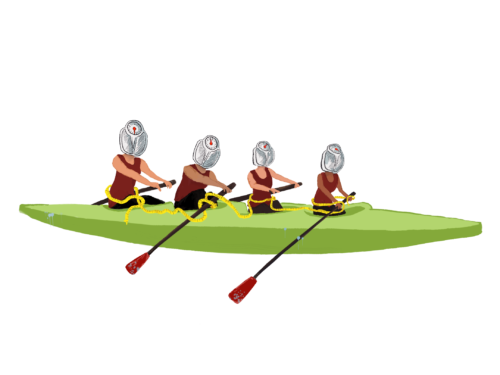Do I look fat today? Can you tell I had a cookie last night?
Even a year after their relevance, I still find myself asking these questions. The residual trauma from competing in a sport that actively constricts weight, allowing petite women to be competitive, has resulted in a haunted relationship with my food.
Women’s Lightweight Rowing, in both high school and collegiate competition, institutes a maximum weight of 130 lbs per rower. With the intention of allowing women with smaller body types to compete on a more even playing field, women’s lightweight rowing has emerged in collegiate rowing programs across the country; it sounds like something positive.
Harvard women’s rowing team, Radcliffe, was established in 1972 as the first women’s rowing program in the Ivy League. Lightweight rowing, which became widely popularized on the collegiate level much earlier in 1919, has empowered women from theoretically all body types to compete in an activity that relies on the physics of a boat. In reality, lightweight rowing has resulted in the distorted perception of forcing athletes into weight brackets they should not conform to. Although these weight classes have allowed me to reach success in rowing, , the repercussions of the eating methods athletes resort to are not temporary.
I am a former member and athletic recruit of the Harvard Radcliffe Lightweight Rowing, one of the top rowing programs in the country, and arguably this sport is the cause of my disordered eating. I rowed in the fall of 2021, however, my collegiate rowing career was cut short due to injury. My teammates’ and my food obsessions were catered to satisfying scale numbers. Every night for a week before weigh-in, we would walk 1 mile from our boat house to Trader Joes; not because it was the closest place to get food, but because it would burn the minimum calories we would gain from the protein bar that we were planning on eating for dinner.
My teammates taught me how to trick my body into losing weight, including drinking two gallons of water two days before weigh in, and none the following day. This made our bodies think that we had too much water, which resulted in a shedding of 6 lbs of water weight.
Eating disorders are prevalent in the world of collegiate athletics; sports such as wrestling, cross-country, gymnastics, etc. all can induce disordered eating. Yet these other sports inherently do not require their athletes to maintain high amounts of muscle density. This dichotomy between remaining light and thin, yet still being able to exert high amounts of strength and power, creates a struggle that many lightweight athletes face.
It has now been six months since I was on the team, but I still feel the urge to walk after meals, skip dessert, and obsessively check my weight. And I am not alone. “I still feel bad about eating a bagel or pasta because those are foods I could never eat when I was on the team,” one anonymous former Radcliffe Lightweight Rower said.
“I still weigh in, hoping I;m less than I was last week,” said another.
“I have gained almost 20 pounds since I was on the team, and I am mad at myself for it. But I shouldn’t be; I’m finally at a weight where I get my period,” a teammate added.
Colloquially abbreviated as NARP, “non-athletic regular people” are expected to be free from athletic dietary restrictions and requirements. Yet the residual awareness of my weight has not vanished, and I am left with an unnecessary hyper-consciousness of my food. It’s a part of NARP life I didn’t anticipate having.
Sam Mosconi ’25 (smosconi@college.harvard.edu) writes Sports for The Independent.

